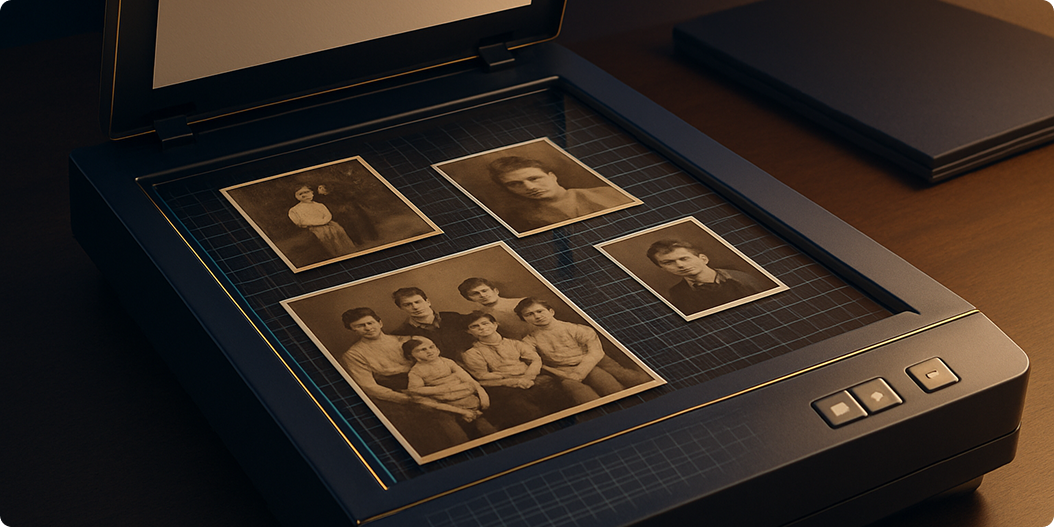You’ve probably heard people say, “That photo isn’t high enough resolution!” But what does that actually mean? Is it about the number of pixels? The quality of the image? Or something else entirely?
When we talk about “resolution” in digital images, the term can be surprisingly slippery. Photographers, graphic designers, and archivists may all use it differently—and often, consumers are left trying to decode jargon like megapixels, DPI, and pixel dimensions. In this post, we’ll clarify what image resolution really means and how it matters when you’re digitizing analog materials.
What Is Image Resolution?
At its core, image resolution refers to the number of pixels in a digital image. A pixel is the smallest unit of a digital image—a single point of color.
Resolution is typically expressed in terms of width × height. For example:
- A 1200×1800 image contains 2.16 million pixels (roughly 2.2 megapixels)
- A 2400×3600 image contains 8.64 million pixels (about 8.6 megapixels)
This is different from DPI, which relates to how that image was created (or printed)—we’ll explore this more in our next post.
Resolution in Scanning vs. Photography
In photography, resolution is largely a function of the camera sensor: more megapixels = more detail (assuming lens quality and lighting support it).
In scanning, resolution is determined by the DPI setting and the size of the original. For example:
- Scanning a 4×6 print at 300 DPI = 1200×1800 pixels
- Scanning the same print at 600 DPI = 2400×3600 pixels
So a scanner doesn’t have “megapixels” in the same sense—a 600 DPI scan of a large photo will produce more pixels than a 1200 DPI scan of a small photo.
How Resolution Affects Image Quality
More pixels generally means more flexibility. Benefits include:
- Cropping: You can zoom into a part of the image and still have enough resolution for printing or viewing.
- Printing: High-res images can be printed larger without looking pixelated.
- Restoration: Tools like AI enhancement, noise reduction, and dust removal work better with more image data.
- Futureproofing: Today’s 1080p screen may be tomorrow’s low-res standard. A higher resolution scan helps you keep up.
But there are diminishing returns: scanning a blurry photo at a very high resolution won’t magically add sharpness—it’ll just make the blur bigger.
Understanding DPI vs. PPI
These terms are often confused. While DPI (dots per inch) is used for printing or scanning, PPI (pixels per inch) describes the resolution of a digital display or image.
Example:
- A 2400×3600 image printed at 300 PPI will be 8×12 inches.
- That same image printed at 150 PPI will be 16×24 inches—but may appear less sharp.
So resolution (in pixels) is fixed once the image is scanned or captured. How it looks in print or on screen depends on the PPI setting during output.
Compression and File Types
Another wrinkle: file type and compression affect perceived resolution.
- TIFF files are often uncompressed or lossless and retain full resolution.
- JPEGs use lossy compression; even if an image is 3000×5000 pixels, compression artifacts may reduce effective sharpness.
When digitizing for long-term preservation, it’s best to save high-resolution images in lossless formats, even if smaller JPEGs are created for sharing.
How Much Resolution Do You Need?
Here’s a general guide:
- Social media or emails: 1000–1500 px wide (1–2 megapixels)
- Basic reprints (4×6, 5×7): 1800×1200 px or better (300 DPI scan of 4×6 photo)
- Enlarged prints (11×14, 16×20): 3000–6000 px on long edge
- Archival scans: As high as practical—especially for negatives and small originals
The Limits of Resolution
More resolution doesn’t always mean a better image. It won’t:
- Fix out-of-focus or motion-blurred images
- Remove scratches or tears (unless paired with restoration)
- Improve color accuracy (you’ll need color management for that)
In other words, resolution is just one piece of the quality puzzle.
Takeaway: Think in Pixels, Not Inches
When planning a digitization project, it helps to think in terms of pixel dimensions rather than print sizes. This shifts the focus from “how big can I print this?” to “how much detail do I want to preserve?”
For legacy archives, high-resolution scans (from large originals or high DPI settings) offer the most flexibility for the future.
And if you ever need to print, publish, or enhance those images—you’ll be glad you captured every last pixel.
